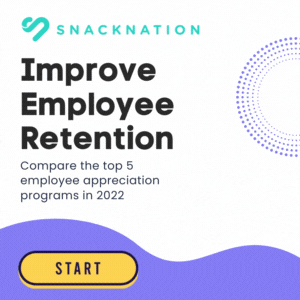Virtual meetings sound sort of futuristic…
Does “virtual” mean we all gather via hologram like they do in science fiction movies?
Do we put on headsets to enter virtual offices that have slightly better furniture and views than our real offices?
As more and more people start working from home, many of us are asking:
What is a virtual meeting?
A virtual meeting is an event that brings people together via the internet or a digital network, usually to achieve a shared objective. A well organized virtual meeting allows people to collaborate and share information in real-time without the need of being in the same physical location.
Monica Linares from our State of the Executive Assistant Facebook group explains further:
“Virtual meetings connect us when we can’t be together because of pandemics, long distances, inclimate weather, and other blockers. When planned well, these meetings can help us transcend spatial barriers to maintain work relationships, business continuity, and productive collaborations.”
That’s right! Planning is the secret to getting the most value from your virtual meetings.
Want to hear another secret?
Planning doesn’t have to be hard because we’ve outlined all the steps for you.
To make your virtual meetings as effective as possible, see the detailed steps below and download our actionable checklist.
View Our 8-Step Virtual Meeting Checklist
Page Contents (Click To Jump)
Your Virtual Meeting Checklist
What do you want to accomplish during your virtual meeting?
Your goal may be “soft” (getting some quality facetime with co-workers) or it may be “hard” (reaching a consensus on the modified annual sales strategy), but either way, a virtual meeting game plan will help you do what you need to do.
Virtual meetings come along with a specialized handful of barriers—technological challenges, low engagement, and disjointed meeting flows—that could get between you and your objective.
Talking to Inc., expert trainer Lee E. Miller summed up the problem perfectly:
“The biggest mistake people make is assuming that influencing when you are meeting face to face is the same as influencing when you are interacting virtually. It’s not. The rules are different because people respond differently when they are interacting virtually.”
This checklist will help you get past virtual meeting challenges.
Step 1: Nail down the details
Do this: 1-2 weeks before your virtual meeting
Why:
- Nailing down the details will help you identify ways to overcome virtual meeting challenges, including:
- Technological difficulties
- Interruptions and distractions
- Lack of conversational flow (In the absence of physical cues, people tend to talk over and interrupt each other more)
How-to:
- Envision exactly how your meeting will run from start to finish by considering the factors outlined below.
- Document your flow for reference during future planning steps.
Technology and equipment:
- Identify your virtual meeting tools and tech.
- Learn how these virtual meeting tools work.
- Share basic tool instructions with attendees.
- Consider what your tool’s capabilities allow you to do:
- Mute/unmute participants
- Turn off participants’ video
- Dismiss participants if necessary
- Set a background
- If you need to use other software platforms during the virtual meeting, considering using a collaboration platform like Toasty.
- Choose a neutral/professional setting where you can host the meeting with minimal interruption
- Test your meeting tool on your computer
Pro-Tip: Make virtual feel more in person with Hoppier.
Drive virtual attendance and get everyone excited with unique experiences that go beyond virtual. Hoppier virtual spending cards enable your participants to order breakfast, drinks, lunch from their favorite restaurants in minutes.
To experience the platform, simply book a call with their team and get creative ideas on how to throw a memorable virtual meeting!
Engagement:
- Create an attendee checklist to mark as people speak. Call on people who haven’t yet had a turn.
- Plan to take roll at the beginning of the meeting so everyone can say “hello.”
- Pick a quick icebreaker question for the beginning of the meeting.
- Develop a short itinerary and an objective summary to send along with your meeting invitation. All attendees should know:
- The meeting purpose
- What topics you’ll cover
- How long the meeting will take
Pro-Tip: Adding the meeting agenda directly into the calendar invite is a good way to give attendees a quick heads up as to what the meeting will be about and also acts as a handy point of reference in case they need a reminder.
- Set attendee expectations.
- Will you invite attendees to leave after certain portions of the meeting? (This could keep engagement up)
- Will you ask attendees to take turns speaking?
- You could use participant muting or hand-raising functions to facilitate turns.
Troubleshooting:
- Commit to waiting only about 3 minutes before starting your meeting.
- Mute all participants upon entry to avoid getting derailed as latecomers trickle in.
- Ask someone to moderate emails from attendees who can’t connect.
- As the host, you won’t be able to lead an engaging meeting while also providing IT support.
- Ask someone (perhaps your email moderator) to help mute participants that have been making distracting background noises for 3 minutes or more. (Asking these people to self mute will only further disrupt the meeting)
- Ask someone to be your co-host. As you’re focusing on covering key points, this person can monitor engagement.
- Commit to an “identify and eliminate” problem-solving strategy for unforeseen challenges.
- Limited meeting times leave no wiggle room for time-consuming troubleshooting.
- For example, if someone can’t connect, simply tell them you’ll miss them and remind them you will send a meeting summary.
Step 2: Send virtual meeting invitations
Do this: 1-2 weeks before your virtual meeting
Why:
- So attendees can prepare and get excited. (It will also help your planning process to have a head count!)
What to include:
- Meeting date and time.
- Technological format.
- Include links to connect and also any instructions you developed in Step 1.
- If you haven’t developed instructions, then provide links to the tool’s main website or user guide.
- Attendee expectations. (Especially if you’ve decided to implement speaker turns)
- Meeting itinerary.
- Meeting objectives.
Step 3: Send virtual meeting reminders
Do this: 24 hours before your virtual meeting
Why:
- This helps boost awareness and reminds attendees to prepare.
What to include:
- A request for everyone to test the meeting technology.
- The details outlined in the original meeting invitation.
Step 4: Conduct pre-meeting checks
Do this: 15 minutes before your virtual meeting
Why:
- This is just like setting up a physical meeting room before attendees arrive. You want to be ready to get started as soon as your earliest attendee arrives.
How-to:
- Sign in to your meeting with your fellow hosts and moderators.
- Check your microphone and speakers.
- Verify your meeting settings, including any attendee settings (muting/camera off) you want to have in place.
- Launch a waiting room if your technology allows. (If anyone does happen to sign in a few minutes early, it won’t be a problem)
- Review your meeting flow and itinerary one last time.
Step 5: Kick off your virtual meeting in style
Do this: At the start of your virtual meeting
Why:
- Starting your meeting in an engaging way will set a productive tone.
How-to:
- Do a roll call to give everyone a chance to smile and greet one another.
- Deliver the zoom icebreaker you selected in Step 1.
Additional Ideas:
- Play some music
- Play some trivia
- Play a longer icebreaker game to get people really pumped
- Have a virtual dance party
- Share a hilarious video to get everyone laughing
Step 6: Be the best virtual meeting host ever
Do this: During your virtual meeting
Why:
- Hosting truly makes or breaks virtual meetings. The host sets the pacing and the tone and can influence the level of engagement, keeping people talking instead of looking at their phones.
How-to:
- Stick to your meeting flow and itinerary. Why? This makes your meeting feel organized and purposeful.
Use these strategies/techniques to make your attendees as comfortable as possible:
- Smile.
- Dress as you would for an in-person meeting.
- Speak more slowly than you would in person.
- Mute notifications for all your other apps.
- Focus only on the meeting for its entire duration.
- Speak clearly and into your microphone.
- Extend pauses after everything you say to give people plenty of time to weigh in.
- Make “eye contact” by looking into your camera.
- Frequently ask if anyone has any questions or additional thoughts. (Virtual meetings can sometimes feel like television shows or presentations. Questions and prompts remind people that they are active participants and not passive consumers.)
- Take a group selfie (just a picture of your screen) every 15 minutes to cultivate attention and eye contact.
- Speak with your hands to encourage attendees to look at you and make eye contact.
- Avoid looking at yourself. (Hide your view if you must)
- Acknowledge speaker contributions with a silent nod. (Verbal comments will slow the meeting down, but a physical confirmation lets attendees know they’ve been heard.)
- Call on attendees who haven’t had a chance to say anything.
- If your meeting is long, take breaks.
- Use additional icebreakers or icebreaker jokes to engage attendees who stay at their desks.
Want more tips? Try hacking some of these techniques for acting on camera.
Step 7: Don’t just end your virtual meeting—close it
Do this: Before you sign off of your virtual meeting
Why:
- Virtual formats enable us to leave meetings with one easy click of a button. Avoid the urge to press that button and bounce. Close your meeting with purpose and control.
How-to:
- Ask if anyone has any other thoughts to add.
- Summarize key points.
- Summarize next steps and clarify responsible parties.
- Tell attendees you will send a follow-up email shortly so they know to watch for it.
Step 8: Follow up immediately
Do this: After your virtual meeting concludes
Why:
- Following up immediately helps you continue engagement while attendees have your meeting fresh in their minds.
What to include in a follow-up email:
- Next-steps summary.
- Key meeting accomplishment. (With any luck, this will match your key meeting objective)
- Recording. (if applicable)
- Satisfaction survey link or simply a request to email you directly with feedback. (Was this meeting useful? Why or why not?)
Additional follow-up steps:
- Reach out to anyone who had trouble connecting to the event from their home office.
- They’ll of course be included in your main follow-up email, but an extra apology is a nice touch.
View Our 8-Step Virtual Meeting Checklist
People Also Ask These Question About Virtual Meetings
Q: What are the advantages of virtual meetings?
- A: The advantages of virtual meetings include connecting us when we can’t be together and helping us transcend spatial barriers to maintain work relationships, business continuity, and productive collaborations. Use this planning checklist to enjoy all the advantages of virtual meetings.
Q: How long should a virtual meeting last?
- A: Virtual meetings should last for no more than an hour. Break your meeting into 15-minute segments and take breaks to keep attendees energized. Be prepared to use your judgement. If you sense engagement has plummeted, it might be more productive in the long run to end your meeting early.
Q: How do I make a virtual meeting interactive?
- A: Make a virtual meeting interactive by carefully planning every aspect of your meeting. This includes understanding hosting techniques that make people comfortable and identifying engagement strategies that encourage participation.
Q: How do I know if my virtual meeting was effective?
- A: Know if your virtual meeting was effective by asking for feedback in your meeting follow-up email. You can also take steps to make your meeting as effective as possible in the planning process.
Q: What is the first step to conducting an effective virtual meeting?
- A: The first step to conducting an effective virtual meeting is nailing down all the details. You can find all 8 steps here.
Q: Why do virtual meetings work in 2022?
- A: Virtual meetings work in 2022 because our need to meet remotely is greater than ever, our meeting technology is better than ever, and our knowledge of what makes virtual meetings successful is growing every day.
Q: What do I need to start a virtual meeting?
- A: To start a virtual meeting, you need a presentable work space, a laptop or desktop computer, a reliable internet connection, virtual meeting software, meeting attendees, and a good icebreaker question to kick things off. Find other steps for planning virtual meetings.
Q: Are there ways to improve remote employee engagement in my virtual meeting?
- A: Improve remote employee engagement in your virtual meeting by taking roll, using icebreaker questions, sharing your meeting itinerary and objectives, and carefully moderating your meeting to make sure everyone participates.
Q: What is the purpose of a virtual meeting?
- A: The purpose of a virtual meeting is to digitally bring people together to discuss important issues, achieve critical goals, or build and maintain healthy office relationships.
Q: How should I start my virtual meeting?
- A: You should start your virtual meeting by taking roll and presenting a short icebreaker question. Find out how to plan, host, and end your virtual meeting.
Q: How should I end my virtual meeting?
- A: End your virtual meeting by gathering final thoughts and summarizing key points and next steps. You should also plan to send a follow-up email immediately after the meeting. Find more start-to-finish virtual meeting planning tips.
Is there anything we missed? Please let us know in the comments!






















Thanks for including so many tips on keeping engagement up. Definitely going to need a variety of these tools going forward!
Happy to hear that Emily! Do you have any additional tips?
This really comes handy, especially in these rough times we have right now, thank you